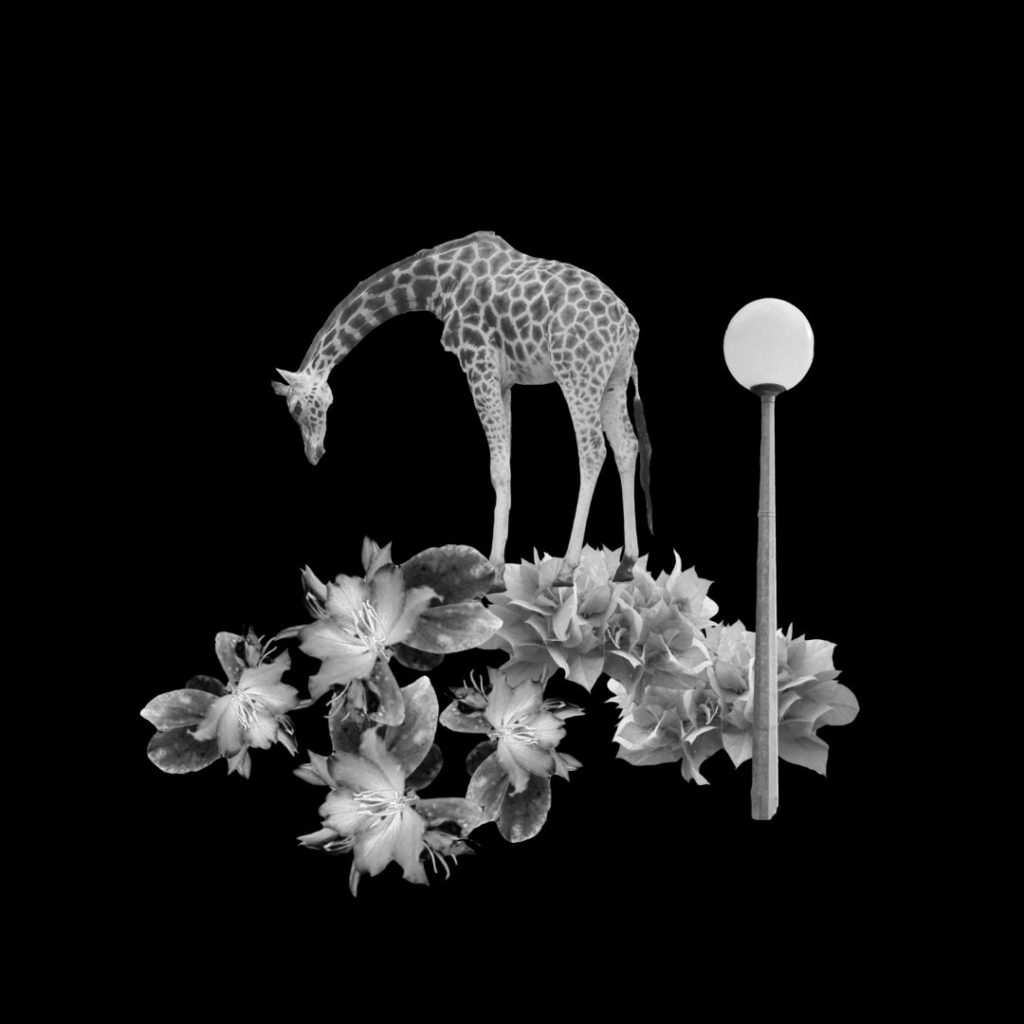Nature Reserve
2021-2022
On Nature Reserve by curator Anat Lidror
Thoughts
A winter morning in London. I walk alone through London Zoo, retracing a blurred childhood memory of a family visit: I was 5 years old, the only language I spoke then was English, my inner topography was in harmony with the hyacinth, ivy and the large yellow daffodils scattered through the streets of London, Islington, my first home. A tall giraffe bowed its long neck, my heart clicked, the camera with it. I felt a shared destiny with this animal, born to be free beneath the sun. Does she long for the dry desert heat of her home, as much as I dream of the cloudy softness that surrounds us now. I return home to the Negev of Israel, 5.5 hours by plane from London to Tel-Aviv. 1:15 hours by car to the small Kibbutz* I now live in. Some 30 years ago that same plane trip was a journey of emigration, following the multicultural love of my parents, forced into a search of a home that welcomes the cultural differences they embodied.
Where we come from echoes through our subconscious, it can take on many forms and span generations. The identity of an immigrant is a continuous synthesis of self and world- assembling languages, social codes, histories and rhythms. In this manner I merge the building blocks of my identity; memories, cultural symbols, personal and collective narratives from Israel and London. I photograph flora and fauna on the seam between nature and culture, animals from zoos, national parks and nature reserves, symbols of architecture, botanical illustrations, and environments woven into our collective identity – constellations, or ancient rock engravings from Mount Saffaron in the Israeli desert. Inspired by the formation of language, practices of taxonomy and places of public memory, I create self-contained ecosystems, closed bubbles of life. I reflect upon the way we evolve out of nature into culture through our experiences of geographical places, the diverse and subtle ways we are connected with the world and the world with us.
Migration and displacement pose some of the biggest humanitarian challenges of our time. People have deep attachment with specific places and communities, and displacement from these deliver a profound psychological blow. But rootedness is only one way to connect with the world. There are other forms of positive connections, offering breadth and openness of experience, stabilizing forces that can mitigate the tendency of rootedness to manifest as setting up boundaries, giving rise to polarities of ‘us’ and ‘them’ ‘in’ and ‘out’. These divisions can degenerate to xenophobia, resistance to difference and fuel all types of territorial conflict and violence.
Looking inward to establish systems of ideas that support life and growth, this body of work is a song for hybrid creatures, their beauty and promise they hold. The potential and necessity to embrace hybrid ways of thought; for the need to reassess ideas of identity and roots, borders and boundaries; the ways we are connected between ourselves and all other life forms. It is an invitation to discuss the mold that produces us, the way culture and nature merge. How we arrange, identify, name, categorize; how we can establish the order we need to communicate and make sense of the world but not lose the unfiltered connection with nature, human nature, and through that- each other.
* Kibbutz (‘gathering’): a type of settlement unique to Israel. A voluntary society based on egalitarian and communal principles in a social and economic framework.
